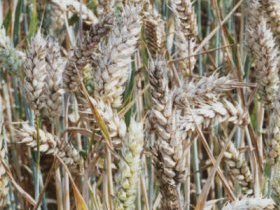Sci Protek protects crops from mycotoxins

Sci Protek Inc. has secured exclusive global licensing rights to a new technology that will help manage the spread of mycotoxins, one of the worst diseases affecting crops such as wheat and barley.
Sci Protek acquired licensing rights to the technology, a yeast, that was developed several years ago in a cooperative project between Ohio State University and the US Department of Agriculture.
Principal investigators include Dr. David Schisler, USDA-ARS, Dr. Michael Boehm, the Ohio State University, and Dr. Naseem Khan, formerly with the Ohio State University.
Specific yeast
Extensive trials over more than 10 years in growth chambers/greenhouses and the field have demonstrated that this naturally occurring strain of yeast exhibited field control of Fusarium head blight (FHB) on certain cereal crops that frequently was indistinguishable from conventional fungicides.
Additionally, the yeast, when integrated into FHB management programs, is likely to mitigate against the development of fungicide resistance developing in the Fusarium pathogen.
“We think this is going to be an incredibly important contribution in future cereal management programs for FHB and the associated mycotoxins that this pathogen produces,” said Nigel Grech, Vice President and Director of Research and Development of Sci Protek Inc. based in Visalia, California.
$1 billion loss
Annual losses in wheat due to FHB in the United States are estimated at over $1 billion.
The yeast, a naturally occurring organism on wheat and barley flowers, acts as a bio-control agent for FHB.
“The Fusarium pathogen infects wheat and barley as they flower causing direct loss of yield and importantly, secretes potent mycotoxins that can adversely affect the health of animals and humans that consume contaminated grain,” Grech said.
Significantly, multiple experiments demonstrate that treating developing grain heads in the field with this yeast technology reduces the level of mycotoxin contamination of grain.
Sci Protek in cooperation with the USDA and the Ohio State University are collaborating to develop the optimal field use recommendations to support the US Environmental Protection Agency registration of this technology.
“This technology fits well with our existing platform of biologicals or biologically derived platforms, as well as providing for a good model for mycotoxin suppression on other crop systems such as corn, peanuts and nut crops,” Grech said.











